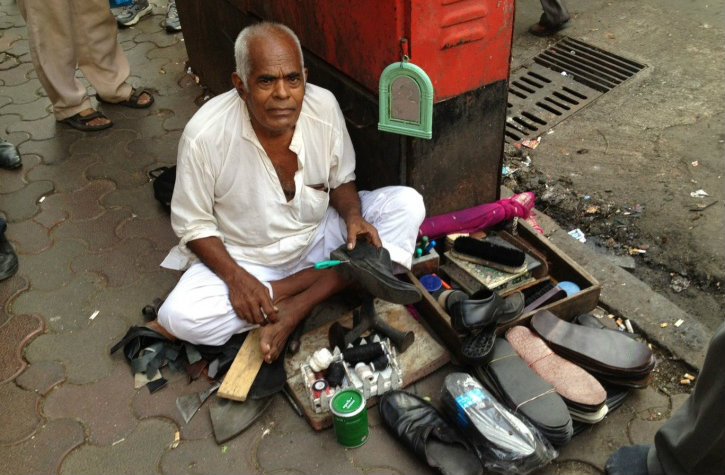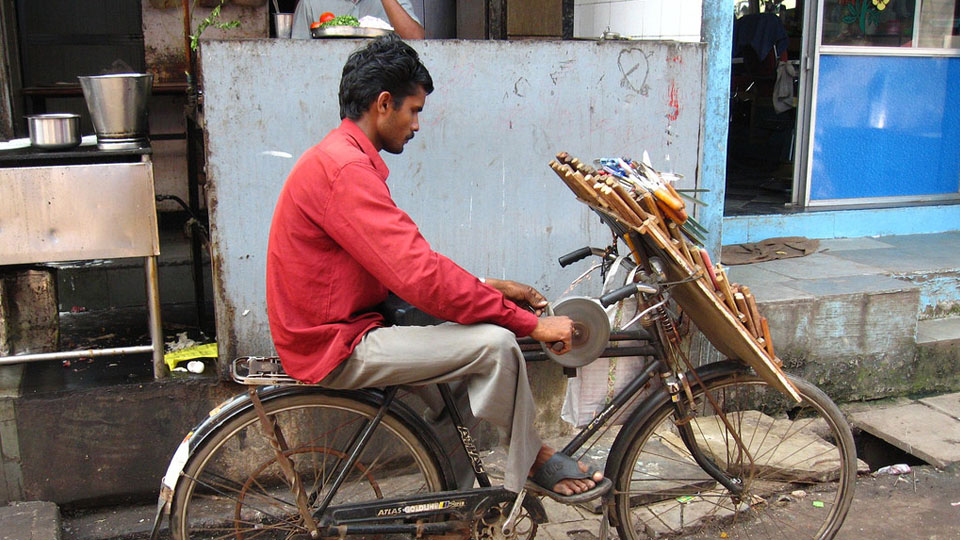
The other day I was at my parents’ house and decided to clean out my old cupboard when I stumbled upon my old school shoe. It was an old pair of black lace up Bata’s. The pair looked like it had gone through multiple surgeries to extend its life; it had white stitches all over and had been resoled.
This reminded me how we used to reuse things. When I was in school if I tore my shoe my mother would take them to a cobbler and have them mended. Back then cobblers enjoyed a regular presence in our life.
Today we have a throwaway culture, especially among the middle and upper middle class who don’t care to mend because they have money to spend.
Earlier one would be happy to get their older siblings’ clothes. Today younger siblings would be embarrassed to be seen wearing used clothes. Also two decades ago many may remember grandmothers would collect old clothes, cut them up and stitch a blanket.
Before liberalisation, Indians recycled or reused numerous things. In the 1980s, green whiskey bottles were much coveted and would be reused as water bottles or a vase. Today supermarkets offer such a large selection of plastic and glass water bottles that recycling old bottles is no longer appealing.
During my childhood, I remember my father paying a refundable deposit of two rupees for each soda bottle which I would keep an eye on and promptly return to the shop just so that I could buy an ice lolly with the refunded money.
This made me fiscally responsible while being environmental-friendly. But then one day came disposable plastic bottles that put an end to my glass-bottle-initiated economy and, of course, my beloved ice lolly.
Not just green bottles, our parents would even keep old Kissan jam bottles to store condiments in them. Oil would be bought every month in a 5-litre tin box with a pop up lid. This tin box would later be used to store rice and flour.
I remember the chairs in my grandmother’s house with a woven cane mesh. When enough strands had snapped, she would call in a man who would spend a few hours and weave a new mesh! Today cane weavers are on the wane.
Kitchen knives would be used for years by giving them a new lease of life every few months. A knife-sharpener would come by on his bicycle and sharpen the knives in just a few minutes. Television sets and mixer-grinders would be repaired. Nowadays, their life span is defined by their warranty period.
The Indian middle class had a culture of mending things before spending on a new one. Hell, we would darn torn clothes. Does anyone darn today? In fact, till just a decade ago, when one’s white shirt got a stain, they would simply take it to Sunlight Dry Cleaners and get it dyed black. No one dyes anything today… except perhaps their hair.

People want new things and companies have consciously made sure their products have a limited shelf life. In manufacturing parlance it’s called ‘built-in obsolescence,’ which means designing and manufacturing a product or part so it fails after a certain amount of use. A cell phone is a perfect example. Every year mobile phone companies want you to buy new phones, which are not drastically different. But if you don’t want to change your phone, then you are forced to as they upgrade your software, which invariably slows down the phone so that you’re left with no choice but to buy a new one.
Could it be that previous generations are more emotional about their possessions because they grew up in a time when choices were limited? My father still listens to the early morning news on a radio he bought in 1974! It has been repaired a few times but it lives on. My mother has not let go of the cane furniture set she bought in 1978 and we still have our Maruti 800 from the 1980s.
People were proud to say how old or how long they’ve had a particular possession in their life. Today it almost seems like people are embarrassed to have things in their life for too long.
But that is slowly changing with the emergence of a “shared economy.” A middle class urban Indian doesn’t really need a car today. They can simply Uber. If you are driving out of town they can rent the best of cars through Zoomcar. If you are travelling to another place, Airbnb is a great way to find affordable accommodation or one can even stay for free using CouchSurfing. Even for clothes there are numerous apps like ‘share wardrobe’ where you can exchange clothes! Mysuru’s ‘Trin Trin’ bicycle sharing system works on a similar concept.
India used to have a circular economy — reusing resources till we have extracted the maximum value from them. This attitude to reuse things still exists in the lower strata of society, but hopefully with technology and a renewed interest in the environment it will spring back among the middle class. The government also can do its bit like the Swedish government, which gives tax breaks to people who repair and reuse their old things.
For now we are still sliding towards a throwaway economy by buying things we use for short periods of time only to upgrade to the latest versions. In the process, we have ended up being wasteful, debt-ridden and perpetually in a state of discontentment, as we feel defined by what we have.
There is pride in having old things. Fixing what is broken is a virtue. Hopefully, we will go back to the days of ‘first mending before spending’ — after all, a penny saved is a penny earned.
e-mail: [email protected]








Nice article! We are currently in real need of mending as lots of garbage pile up everywhere triggering environmental hazard.